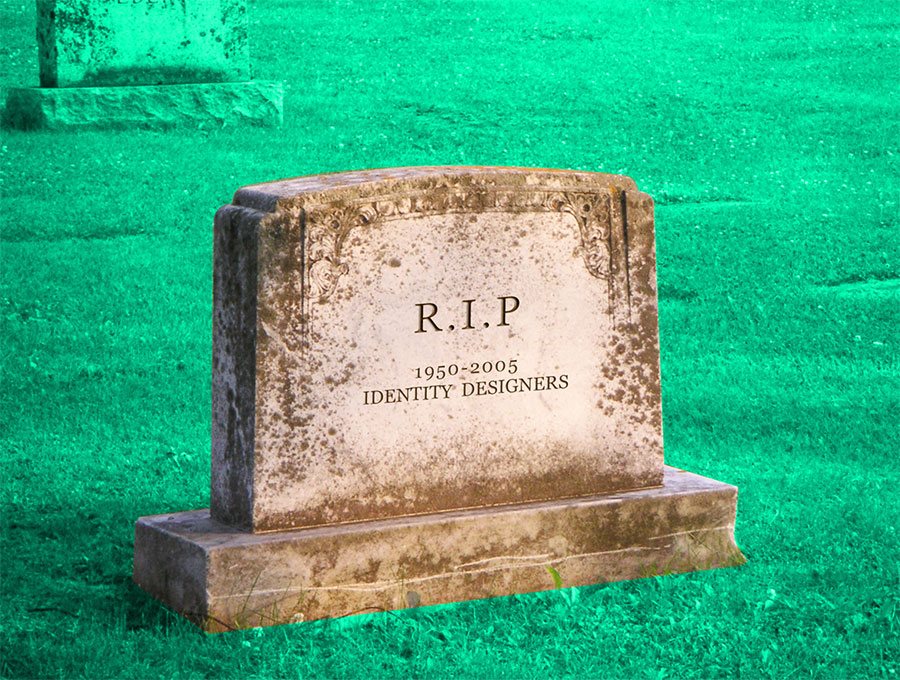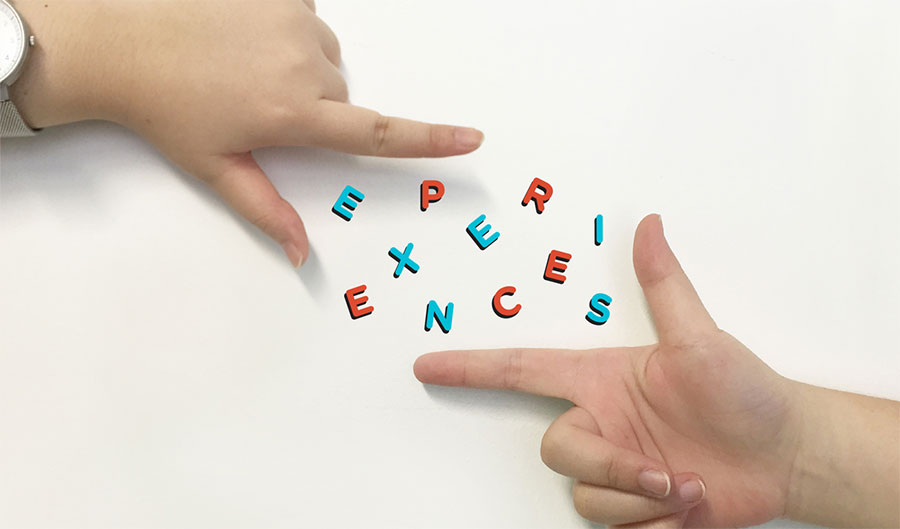design vs strategy
Whatever happened to identity designers? They used to be the guys who designed logos and identity systems, and the design schools turned out lots of them. Well they are still there, but they have ‘rebranded’ themselves as brand consultants.
In the process, some commentators think they have sold their designer souls to the devil. Others think they have simply woken up to the realization that if they want to truly shape the brand from the ground up and avoid being relegated to decorators, they have to move upstream and embrace strategy too.
Here’s two opinions from different sides of the debate. What do you think? Which of the writers below do you agree with, or do you think the right course is to steer right down the middle? Let us know what you think.
Why designers should give branding back its soul
Adrian Shaughnessy
In an age where companies think branding strategists can solve all their problems, Adrian Shaughnessy argues that designers should take back control. Here is a condensed version of his article.
Graphic designers rarely question the practice or culture of branding. Hardly surprising, since the creation of brand identities and branded communications is what provides so many graphic designers with a living. Designers need clients, and clients want branding.
So, if designers want to have plenty of work, it’s probably wise not to look too closely at what branding is, and what its effects are on the profession of design or on the wider culture. However, this unquestioning assimilation of brand culture is inevitably raising questions of its own.
For example, why have hundreds of designers chosen to call themselves ‘brand designers’, or even worse, ‘brand imagineers’? And why has the term ‘identity designer’ been widely abandoned, when it more accurately – and perhaps more honestly – describes what the majority of ‘brand designers’ actually do?
Opposition to branding
Of course, beyond the world of design it is not the case that everyone accepts branding unreservedly. There are those, such as anti-capitalist activists, who are opposed to branding in all its forms and see it as a representation of unacceptable corporate power. There are also social commentators and cultural thinkers who see our obsession with brands as evidence of enslavement to materialism and consumption. But it is not my intention here to discuss the ethical or political sides of branding.
Instead, I want to look at three things: the ways in which branding has affected the practice of graphic design and the role of the graphic designer over the past few decades, the reasons behind why graphic designers gave up being ‘identity designers’ in favour of becoming ‘brand designers’, and what exactly constitutes good and bad branding.
Branding: a definition
First, we need a clear definition of what branding actually is. In the graphic design section of the website About.com, the following definition is offered: “To create a ‘brand’ for a company is to create their image, and to promote that image with campaigns and visuals…. The goal of a brand is to make a company unique and recognisable, and to project a desired image.”

A more nuanced definition is provided by Seth Godin, an author and entrepreneur who has been lauded as America’s greatest marketer. For Godin, a brand is “the set of expectations, memories, stories and relationships that, taken together, account for a consumer’s decision to choose one product or service over another”.
Godin also goes on to make the point that a brand “used to be a logo or a design or a wrapper. Today, that’s a shadow of the brand, something that might mark the brand’s existence. But just as it takes more than a hat to be a cowboy, it takes more than a designer prattling on about texture to make a brand.” He concludes by stating that, in brand creation, “design is essential, but design is not brand.”
My personal view is that the role of design in branding is about the creation of the symbolic or outward face of companies, institutions and services. But as soon as branding becomes about depicting or conveying the less tangible assets such as ‘brand essence’, ‘brand promise’, or any of the other clichés of branding, I become skeptical about what designers can contribute.
Anyway, telling customers what to think in the age of social media is simply a waste of time. Not only that, it’s also a form of fundamentalism.
The brand effect
As Seth Godin makes clear, brand people love to proclaim that a brand isn’t just a logo. And if you are looking at the total footprint of a brand, then that’s absolutely true. But try building a brand without a logo or graphic architecture, and you’ll find that it simply cannot be done.
So whether the brand gurus like it or not, the logo is still king in the world of branding, which in turn prompts the question, why are so many brand theorists in such a rush to downgrade the importance of logos and design in general? Remember Godin’s phrase – “it takes more than a designer prattling on about texture to make a brand”. Unless I’m very much mistaken, there’s a strong hint of anti-designer sentiment there.
If we accept that the ‘design’ – the logo, graphic architecture, and so on – is the badge of recognition and the point of identification for all brands, then we must also acknowledge that designers are pretty important factors in the making of brands – perhaps more important than any other individual or group in the entire brand creation process.
If this is true, then it puts a great deal of power directly into the hands of the designers.
And here’s where the problem lies: designers are notoriously tricky and mercurial characters. They’re difficult to control and stubborn about their ideas. As far as the brand consultants, the marketing people and the PR busybodies are concerned, life would be much easier if it could be proved that design is only a minor part of brand building, and much better if non-designers were in control of it.
By making branding into something other than a graphic design discipline, clients have leveraged control of design away from designers and into the hands of various non-designers. You can see this most clearly in the big branding groups, who employ dozens of ‘suits’ – strategists, business analysts, account handlers – and only a tiny number of designers.
Control issues
The most significant effect of this is to hand control of branding to brand people, and to be a brand person, you don’t need to be a designer. Business people understand branding in a way that they don’t understand graphic design.
They become obsessed with strategy, values, tone of voice and market research, forgetting that they are judged on their products, their services and their conduct, and not on what they say (or think) about themselves. In other words, businesses imagine that they can brand their way to success – which of course is an illusion.

There are two major side-effects to allowing non-designers to control branding. The first is to allow logos and design language to emerge that are poor, or in some cases dire, in appearance. The second is that, by allying themselves with the gobbledegook of branding, designers have allowed design to become a junior partner in the brand creation process.
The consequence of this is that most branding programmes are run by non-designers, with predictably bland results.
The decline of the identity designer
In our always-on, networked world, no business or institution can be unconcerned about its public image or its reputation. No one denies that managing a brand’s ecosystem is important and necessary, but without a good visual thumbprint, without good identification collateral, this task is impossible.

So when I say that I think it was a mistake that designers stopped being identity designers and became brand designers, I’m not being backward-looking. Instead, I’m saying that it is more progressive to be concerned with the visual image of an entity than it is to be concerned with its ‘brand values’, which in the end are mostly just smoke and mirrors.
Plus, and this is the really important bit, the other stuff is no longer controllable. Firms and organisations can say that they are ‘ethical’, ‘customer centric’ or ‘service focused’, but unless they really are these things, they are wasting their time saying that they are. For me, this is why designers should stick to design, and firms should not confuse branding with the actual services or products they offer.
Keeping it simple
The designer Sean Perkins founded North, one of the most admired design studios of the past 20 years. The company has created groundbreaking identities for RAC, First Direct, the Barbican and The Photographer’s Gallery. Its work is always robust, distinctive and highly attuned to its client’s needs. But Perkins is adamant that he is an identity designer, not a brand designer.
For him, identity is “building the essential elements that an organisation is known by: name, logo or symbol, colour, typographic style and visual language, and how you uniquely put these together, how you express these to create a sign, an image. We create the building bricks of an organisation’s DNA.”
Perkins sees a clear difference between brand creation and identity design: “The brand is the whole experience, the service, product, personality and expression, and I can’t see how people claim to do the branding, the total experience. We build identities, not brands.”
In Perkins’ view, Vitra, Mercedes, Audi, Apple and Lufthansa all have great brand identities. He calls them “timeless, and no matter what the climate, consistently strong”. But significantly, all these identities were initially created before branding replaced corporate identity as the primary activity of many designers.
What makes a good brand identity
Good visual branding is honest, graphically expressive and highly memorable. It should be optically sophisticated (not muddled or over-cooked) and it should work in print, digital and broadcast settings. In other words, what Sean Perkins calls “a strong, simple identifier that can imbue subliminal qualities of strength, security, trust and assurance”.

In truth, making a clear visual statement and incorporating some subliminal messaging is really all that a brand identity can hope to do. Any ambition beyond that is simply wishful thinking.
Take the Google logo. It is cheerful, and people seem to like it, especially the way it is allowed to reflect events and anniversaries. It has been created for the digital era – a near zero-weight logotype designed for fast loading.… However, my main objection to the logo is that it is a piece of woeful logotype design for one of the most ubiquitous companies, and it could only have emerged in the age of branding. It’s impossible to imagine any of the great logo designers, dead or alive, doing anything as weak and lacking in subliminal qualities. Yet for the age of branding, it is somehow acceptable.
Brand value must be earned
I want to end with a plea for a return to smart identity design. To try to achieve anything else is almost pointless, and will also involve the designer – and brand owners and consultants – making horrendous assumptions and arrogant assertions.
For me, all the brand identities that work are memorable, optically robust, and designed with a sense of style and proportion. These are technical qualities that can be evaluated and assessed, but I also look for how well a brand identity is suited to the entity it is serving – the subliminal qualities that Sean Perkins mentioned. Yet I suspect that in nearly all cases these are retrofitted.
We imbue the logos and physical appearance of a brand with the values that we want. In other words, business and institutions have to earn brand value – it simply cannot be imposed by a logo, a slogan or a promise. It has to be real.
Words: Adrian Shaughnessy is a graphic designer, writer and educator, and a co-founder of Unit Editions, and has authored numerous books on design. He is a senior tutor in graphic design at the Royal College of Art in London. This article has been reproduced with the kind permission of Creative Bloq, and can be viewed in its full form here.
Should branding be in the hands of strategists or designers? Brand identity designer Andy Cogdon gives his perspective.
Why graphic designers need to embrace strategy
Andy Cogdon
In the October issue of Creative Bloq, design commentator Adrian Shaughnessy wrote an article – ‘Why designers should give branding back its soul’ – arguing that brand identity design should be taken out of the hands of strategists and returned to graphic designers.
As someone who trained as a graphic designer and who is choosing to specialise in identity design, I thought it as an opportunity to share some of my thoughts and opinions on branding and identity design.
Graphic designers need to grow up
When I decided to start specialising in identity design, it soon became clear to me that there was a massive knowledge gap that needed to be bridged. I had a decision to make; either to find a brand strategist to work with, or to learn myself.
Brand strategy is not something that was taught in design school, at least when I was studying. But understanding the relationship between design and business is central to the branding and identity process. I’ve since become fascinated by brands and branding; its mix of business strategy, leadership, psychology, sociology; and the role design has in influencing brand perception and human behaviour.
If graphic designers want a seat at the top table, they need to have an understanding of business. Michael Johnson of Johnson Banks talks about how if a designer wants any level of control, they must be willing to step into the boardroom.

Branding as a platform
Brand to me is an organisation’s DNA, all the things that make them uniquely who they are, and what the organisation stands for in the minds of people. Branding is our attempt to frame people’s experiences of that brand in a positive way; reinforcing the brand promise. Identity is the visual styles, devices and guides which govern this framing. Identity also acts as a platform, through which a brand can share its story with the world.
When I work with leaders, I see part of my task as helping them to articulate a clear vision for the future of their companies. Their brand identity becomes a platform by which they can share and reinforce their vision in both visual and verbal ways. In the same way we often hear ‘Brand is not a logo’, identity is not just a logo.

Brand values are important
Adrian Shaughnessy describes brand values as “smoke and mirrors” and earlier use Apple as an example…“Apple products are loved because they work efficiently and look good.” And yet anyone who has spent any time studying Apple will know about its absolute obsession with simplicity. It is one of its core brand values and shapes everything it does. Simplicity has stood it out against its competitors time and again. Simplicity is deeply ingrained into every employee and influences every design decision.
Sure, there are some who seek to use values as a manipulative marketing tactic (spin). But they fail to appreciate that in this hyper-connected and transparent world, they will be found out. But values which are deeply embedded into the life of a organisation can inspire its brand on to greatness.
As Steve Jobs said, “To me, marketing is about values.” Markets can change, products can change, people can change; but values should not change. When designing an identity with the intention to last, understanding the values that shape a company help to inform the work we do.
Design is strategic
“Do you make things look nice? Do you spend more time worrying about nuance and aesthetic than substance and meaning? Do you fiddle with style while ignoring the big picture? If your answers are yes, yes, or yes, you are a decorator.” – Steven Heller, Design Cult
By doing graphic design, I get to do a job I love. But I’m not an artist. Graphic design is a job, working for real clients with real business challenges that need to be met.
There is a place for decorators. But when you are a multi-million pound business, or an organisation that serves thousands of people, leaders are looking for something that penetrates deeper. Creativity is not whimsy as some believe. Creativity – to me at least – is an ability to think differently and find unexpected solutions.
At the 2012 Clinton Global Initiative, Tim Brown of IDEO said, “Design at its essence is really about being intentional…about how you want the outcome to be.” Design by definition is strategic, it is planning, it is intentional.
Summary
I want to see graphic design return to centre stage, I really do. But to do that, we must move beyond simply being typeface and colour selectors. I believe when it comes to branding and identity design, strategy and creativity are two sides of the same coin. They are not apposing forces, but excellent dance partners. I want designers to use both the left side and the right side of their brains.
I want to see graphic designers in the board room. I want to see graphic designers on the front cover of the Economist or Harvard Business Review. But, unless graphic designers are willing to enter the world of business and leadership, we will find ourselves relegated to the title of decorator. I now see the strategic side of branding as an opportunity to be as creative as the visual side. And when the two work together, then I think we’re onto something with the potential to be remarkable!
I believe graphic design has the power to transform businesses. I believe graphic design can contribute directly to helping solve some of the world’s greatest challenges. It’s time to wake up and take responsibility for the potential we’ve had in our hands the whole time.
Words: Andy Cogdon is a brand identity designer based in Derby, working with clients across the UK. Visit his website or follow him on Twitter. This article has been reproduced with the kind permission of Creative Bloq, and it can be viewed here.





The same question had been around my mind for a long time, which I never had allocated a long, quite moment to really think about it. I think the two different oppositions are actually sharing some similar thought, just in different perspective. There is no definite right or wrong, and I believe the combination of two thinking can yield better design thinking. A very good sharing anyway, thank you!